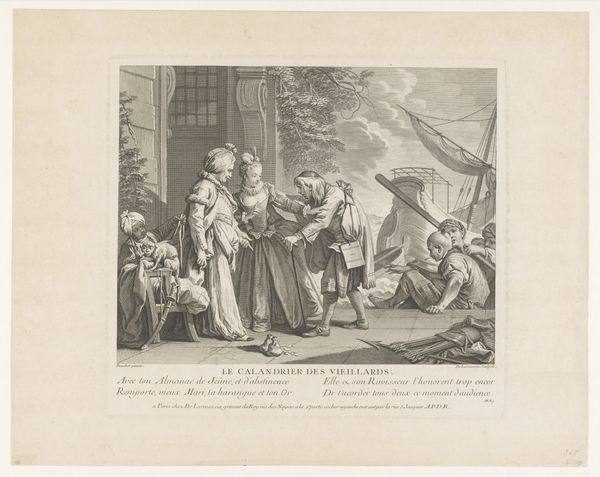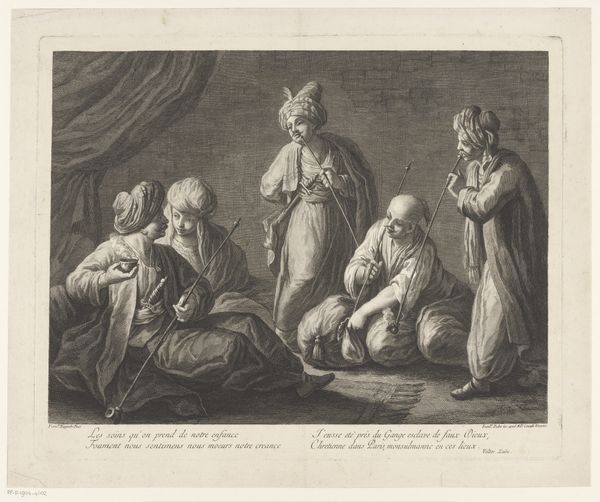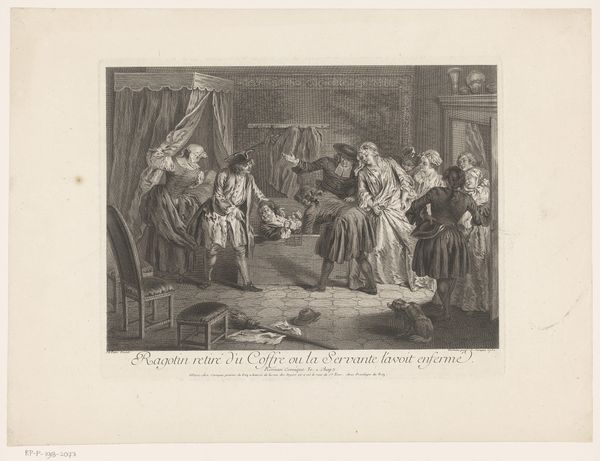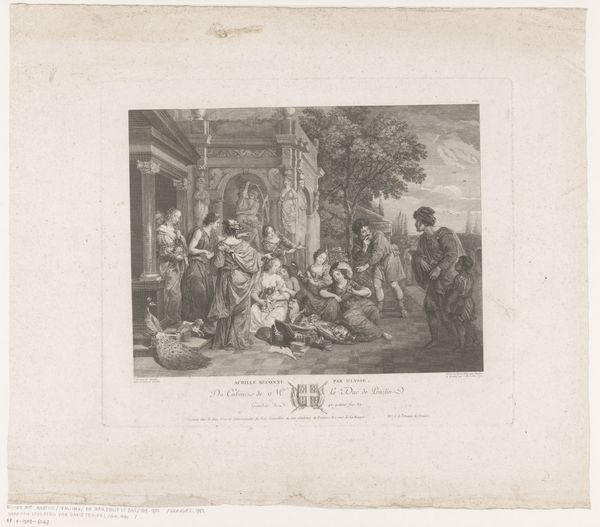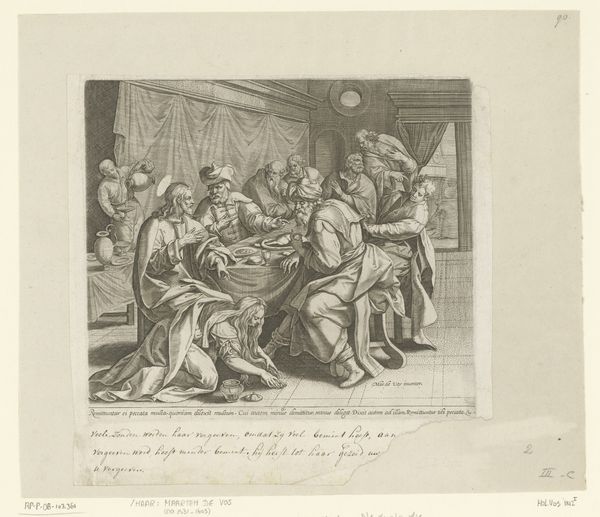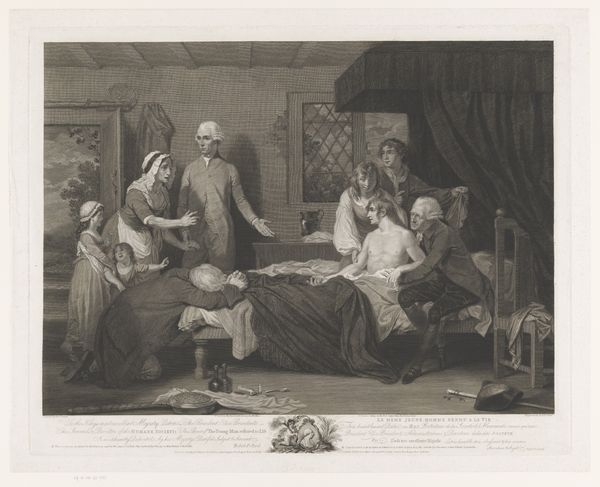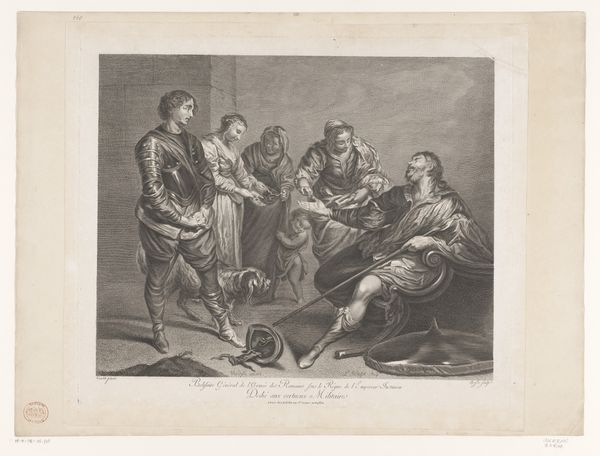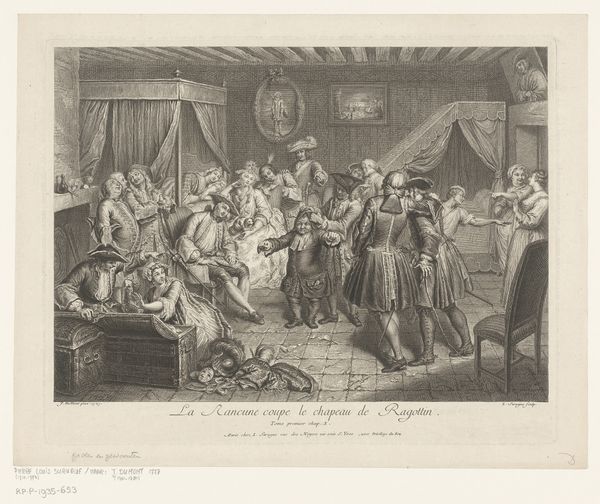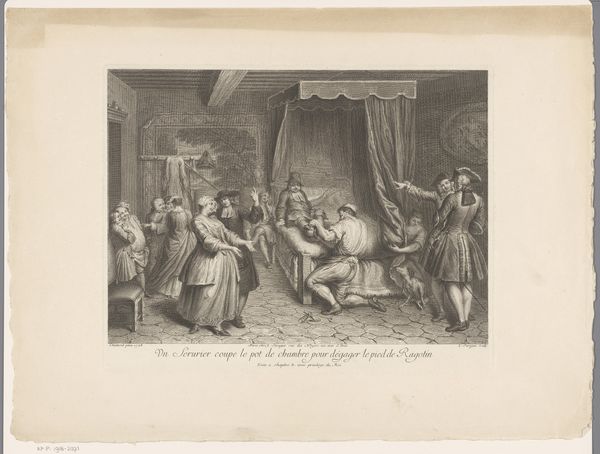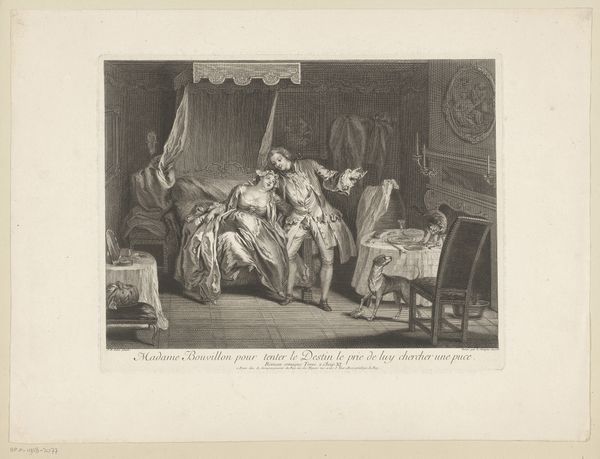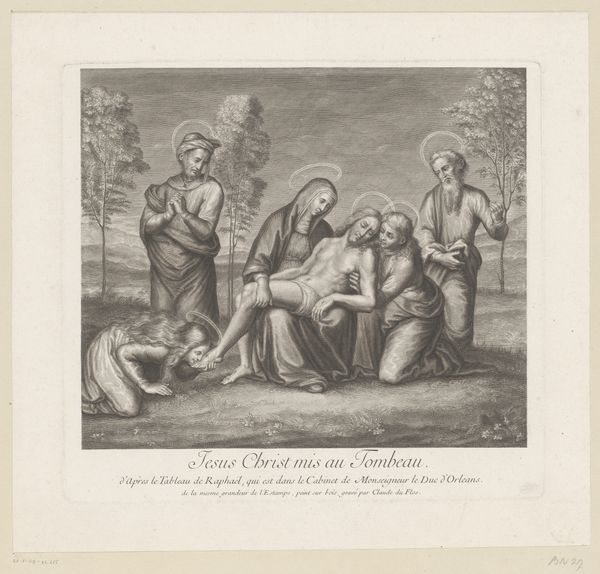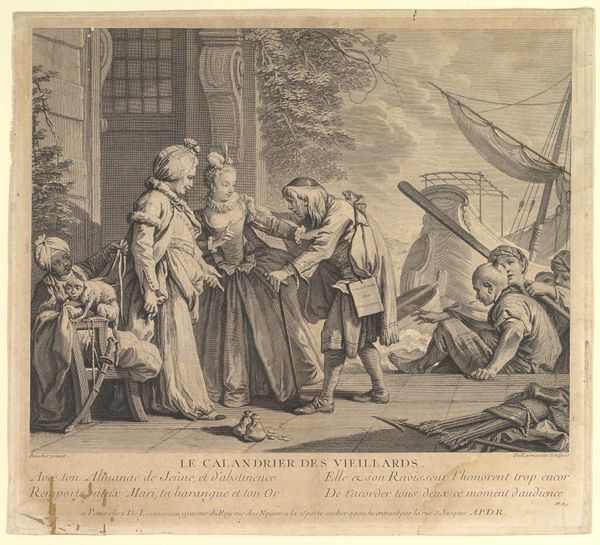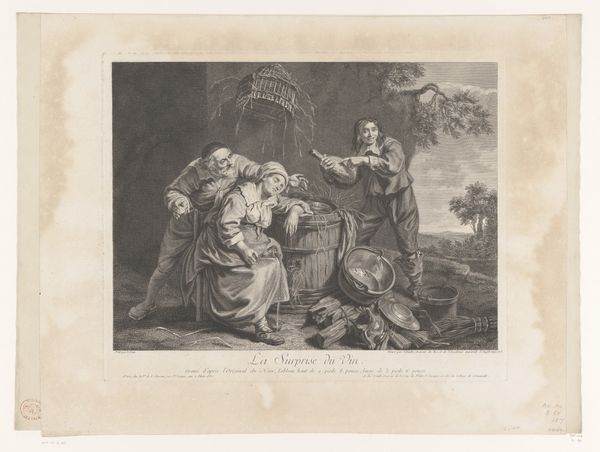
Dimensions: height 403 mm, width 480 mm
Copyright: Rijks Museum: Open Domain
Curator: Immediately, the contrasting groups and the diagonal lines draw the eye into this piece; it feels carefully structured, despite its mundane subject matter. Editor: We're looking at an engraving titled "Mensen en vee bij een bron," which translates to "People and cattle at a well" and it dates approximately to 1766-1774. It appears to present contrasting scenes of rural life, titled below as "Proulium Hollandicum," and "The Flemish farm." Curator: Yes, the bipartite structure is quite clever. The Dutch side is orderly and calm. Look at the placement of each figure, creating triangular forms that lend stability to the left side composition. On the opposing side, we have asymmetry, with people and animals crowded. Editor: The contrast could represent the divergent views and perceptions of rural life in Holland versus Flanders during the late 18th century. Holland, at the time, had a more centralized and ordered approach to social structures and perhaps they wanted to project this image of peace and stability. This contrasted greatly with the political upheavals and wars ravaging Flanders. Curator: You’re right. And the light! It enhances the orderly appearance of the left group versus the implied chaos of the opposing scene. Look how the artist utilizes cross-hatching, dense and varied to denote darkness versus clear, minimal applications denoting light. It all contributes to the visual effect. Editor: We cannot discount the historical context either. The engravings such as this, during the 18th-century, frequently romanticized pastoral scenes as commentary on or even an escape from increasingly urbanizing landscapes. Curator: Indeed. Yet I cannot help but notice the strong visual relationship between all figures, irrespective of sides. Observe how poses are mirroring between figures. Editor: It would seem, perhaps the contrast exists merely on a superficial level, and that deeper understanding reveals their interdependence. Even divided societies are interconnected and their social fabric shares universal attributes, regardless of specific region. Curator: A potent observation. These visual echoes almost suggests something less divided… Perhaps we initially interpret the composition as opposing elements when it reflects something more unified than disparate, a reflection of inherent artistic expression itself? Editor: Precisely. A dual commentary, at first about two places, ending up in unity about mankind through art. Fascinating.
Comments
No comments
Be the first to comment and join the conversation on the ultimate creative platform.

